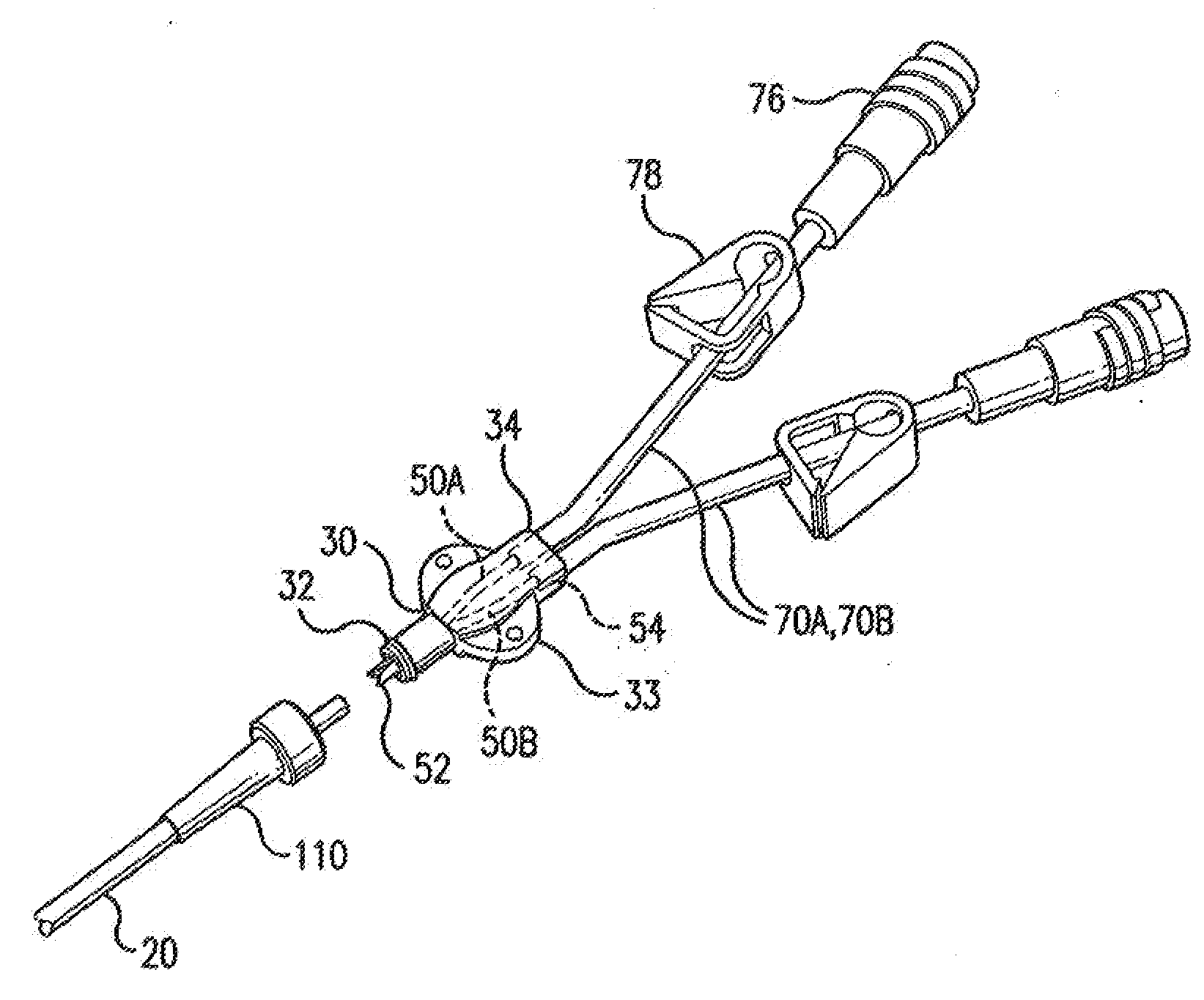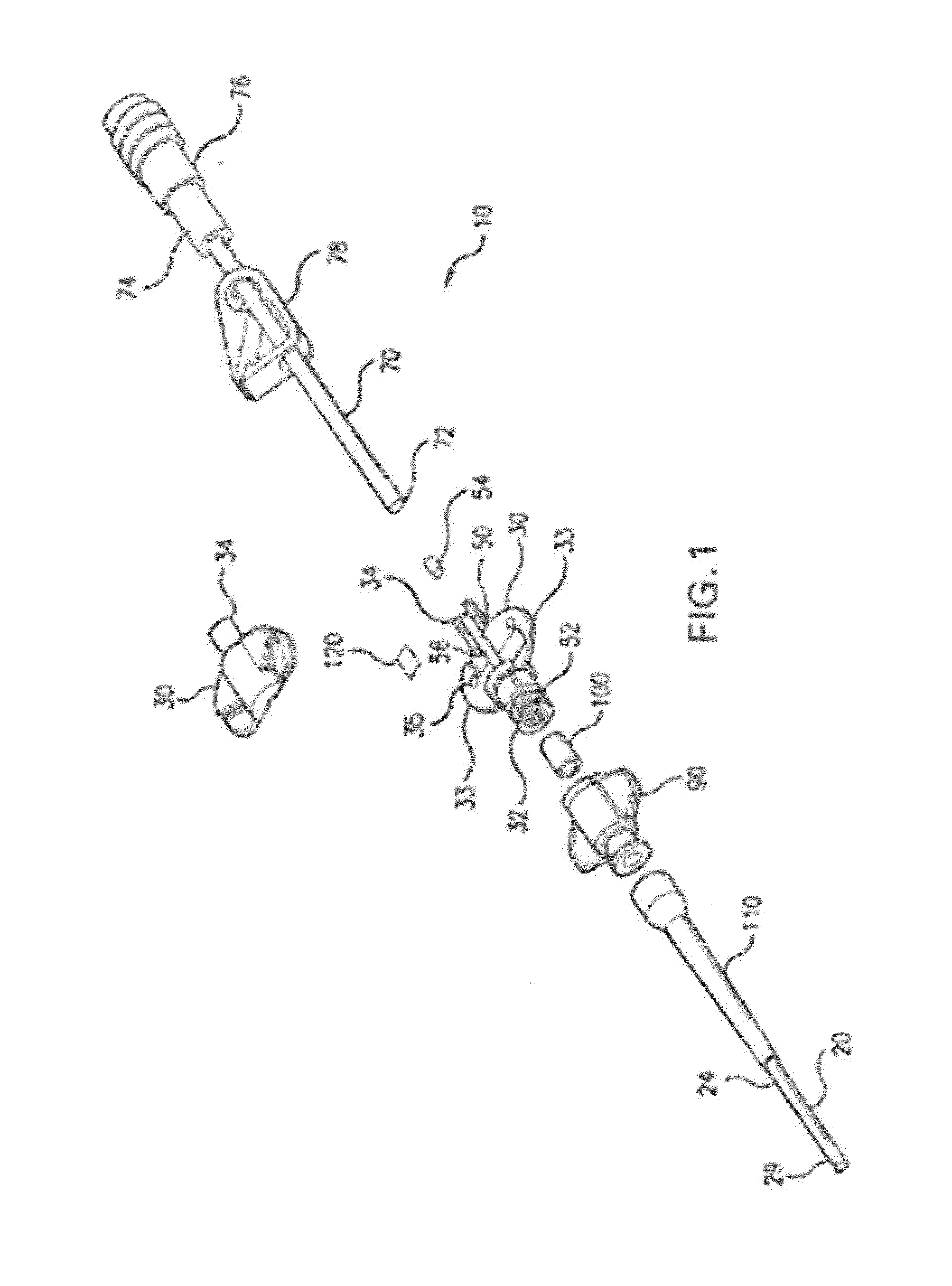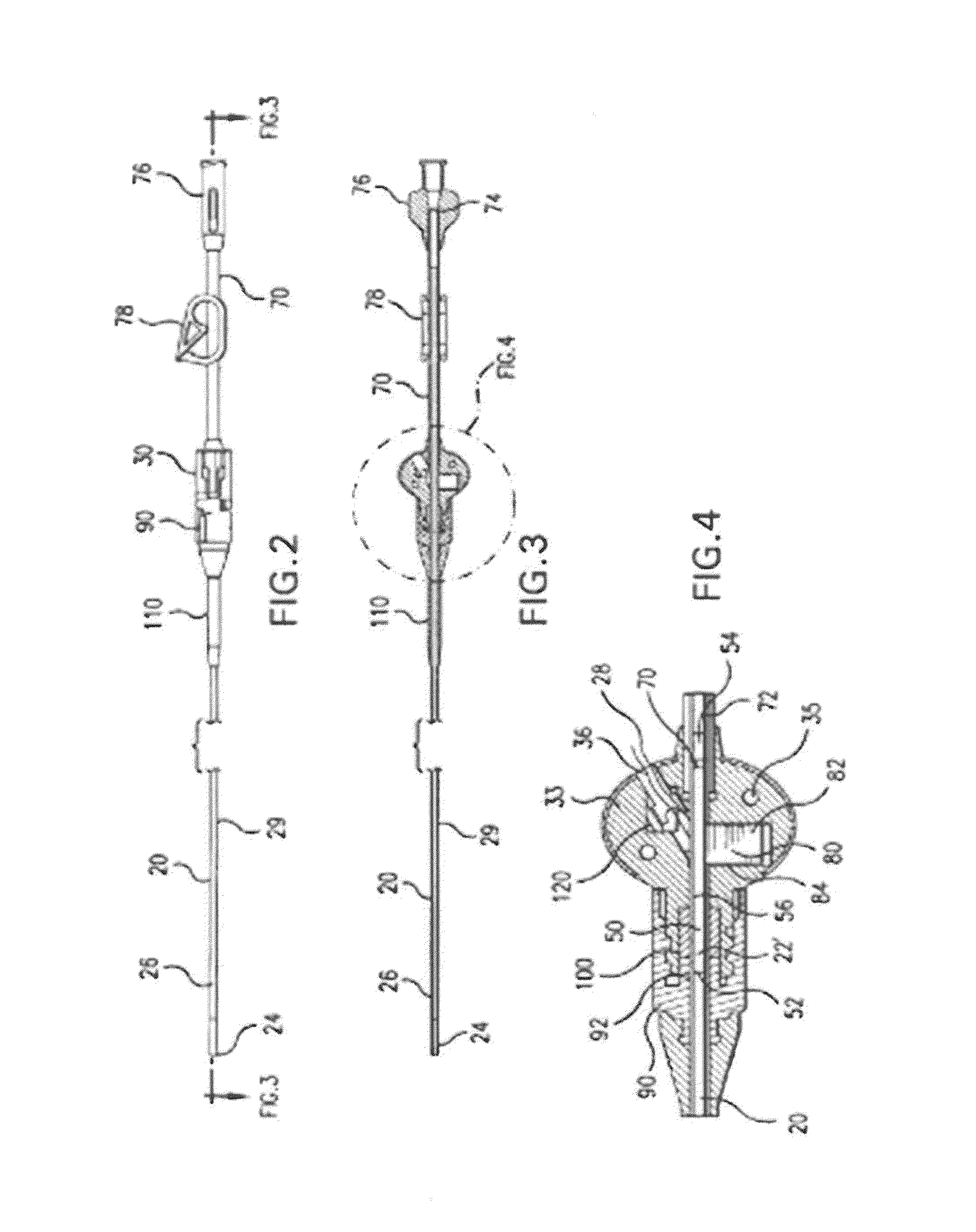Implantable Catheter and Method of Using Same
a technology of implantable catheters and catheters, which is applied in the direction of multi-lumen catheters, catheters, suction devices, etc., can solve the problems of unattractive one-size-fits-all-purpose lengths for patients, inaccurate placement of the tip, and limited use of these devices
- Summary
- Abstract
- Description
- Claims
- Application Information
AI Technical Summary
Benefits of technology
Problems solved by technology
Method used
Image
Examples
first embodiment
[0059]Referring to FIGS. 1-5, an implantable catheter of the present invention is illustrated. As shown in FIG. 1, the catheter 10 comprises a single-lumen catheter tube 20, a means for trimming the catheter tube, a hub member 30, and an attachment tube 50. The catheter tube 20 has a distal end 22 and a tip 24. In one aspect, at least a portion of the catheter tube comprises a radiopaque material that is formed thereon the catheter tube through means currently known in the art. In one exemplary aspect, a stripe of radiopaque material is formed on the catheter tube proximate the tip 24 of the catheter tube 20. In another exemplary aspect, at least a portion of the tip of the catheter tube is formed of the radiopaque material. One would appreciate that it is contemplated that the radiopaque material can be formed in any desired geometric shape on any portion of the catheter tube proximate to or at the tip of the catheter tube.
[0060]The hub member 30 comprises a proximal port 32 and a ...
second embodiment
[0078]FIGS. 6-8 illustrate the catheter 10 of the present invention. In this aspect, the attachment tube 50 of the catheter assembly has a first end portion 52 that has a barbed exterior surface portion forming a barbed connector 58, an intermediate portion 60 that has a raised shoulder member 62, and a second end portion 54 adapted to connect to an extension tube 70. Here, the end of the single lumen catheter tube 20 is connected to the first end portion 52 of the attachment tube after being trimmed to a desired length via cutting means known in the art. As one will appreciate, the barbed connector 58 at the first end portion of the attachment tube provides for internal sealing between the attachment tube 50 and the single lumen catheter 20. The attachment tube, with the trimmed end of the catheter tube mounted thereon, is then drawn up a conduit 40 defined within a portion of the hub member 30 until the raised shoulder member 62 of the attachment tube is positioned into a locking ...
third embodiment
[0080]Referring now to FIGS. 9-11, a dual lumen catheter of the present invention is illustrated. In this aspect, the dual lumen catheter tube 20 is connected to respective attachment tubes 50A, 50B of a pair of attachment tubes after trimming to the desired length. The pair of attachment tubes are mounted at least partially therein the hub member 30 of the catheter. In one aspect, the first ends 52 of the attachment tubes have a D-shaped cross-section and are positioned in opposition. In another aspect, portions of the first ends 52 of the attachment tubes have peripherally extending barb portions 58. In one aspect, the barbed portions of the pair of attachment tubes are shaped and positioned to form staggered double barbed portions. As one would appreciate, the extension legs are positioned in fluid communication with the attachment tubes.
[0081]In this aspect, the catheter 10 comprises a hemostasis taper sleeve 110 that is axially and slideably mounted thereon a portion of the dua...
PUM
| Property | Measurement | Unit |
|---|---|---|
| length | aaaaa | aaaaa |
| inner diameter | aaaaa | aaaaa |
| inner diameter | aaaaa | aaaaa |
Abstract
Description
Claims
Application Information
 Login to View More
Login to View More - R&D Engineer
- R&D Manager
- IP Professional
- Industry Leading Data Capabilities
- Powerful AI technology
- Patent DNA Extraction
Browse by: Latest US Patents, China's latest patents, Technical Efficacy Thesaurus, Application Domain, Technology Topic, Popular Technical Reports.
© 2024 PatSnap. All rights reserved.Legal|Privacy policy|Modern Slavery Act Transparency Statement|Sitemap|About US| Contact US: help@patsnap.com










